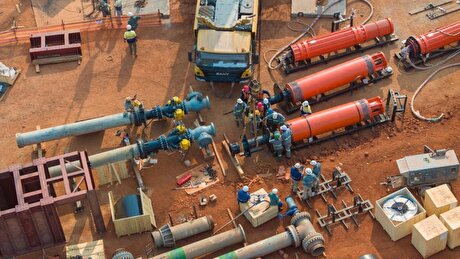
Dutch Look Overseas for Gas


The country became a net importer for the first calendar year since it started production from the giant Groningen field in 1963, Bloomberg reported.
It joins European nations becoming increasingly reliant on sourcing fuel through pipelines from suppliers such as Norway and Russia or via tanker ships from the US, Qatar and elsewhere.
The shift was inevitable after the nation of 17 million vowed to close Groningen following earthquakes linked to extraction from the deposit in the north. Production from what’s left at the site will continue to earn billions for the Dutch state, Royal Dutch Shell and Exxon Mobil for a few more years at least.
The Netherlands gets about 40% of its energy from gas. GasTerra, a venture between the state and the two oil companies, on Friday said its sales rose 17% to $12.6 billion in 2018.
More than a third of the fuel came from Groningen, for which it has the exclusive sales rights, with the rest mainly from smaller offshore fields as well as imports from Norway and Russia.
“Since the first molecules of natural gas flowed from Groningen, the Netherlands has been self-sufficient. No longer,” GasTerra CEO Annie Krist said.
“Natural gas is still badly needed,” partly to meet increased demand in power generation to back up renewable sources and replace coal.


Trump weighs using $2 billion in CHIPS Act funding for critical minerals

Codelco cuts 2025 copper forecast after El Teniente mine collapse

Electra converts debt, launches $30M raise to jumpstart stalled cobalt refinery

Abcourt readies Sleeping Giant mill to pour first gold since 2014

Barrick’s Reko Diq in line for $410M ADB backing

Nevada army depot to serve as base for first US strategic minerals stockpile

Tailings could meet much of US critical mineral demand – study

Viridis unveils 200Mt initial reserve for Brazil rare earth project

SQM boosts lithium supply plans as prices flick higher

Energy Fuels soars on Vulcan Elements partnership

Northern Dynasty sticks to proposal in battle to lift Pebble mine veto

Giustra-backed mining firm teams up with informal miners in Colombia

Critical Metals signs agreement to supply rare earth to US government-funded facility

China extends rare earth controls to imported material

Galan Lithium proceeds with $13M financing for Argentina project

Silver price touches $39 as market weighs rate cut outlook

First Quantum drops plan to sell stakes in Zambia copper mines

Ivanhoe advances Kamoa dewatering plan, plans forecasts

Texas factory gives Chinese copper firm an edge in tariff war

Energy Fuels soars on Vulcan Elements partnership

Northern Dynasty sticks to proposal in battle to lift Pebble mine veto

Giustra-backed mining firm teams up with informal miners in Colombia

Critical Metals signs agreement to supply rare earth to US government-funded facility

China extends rare earth controls to imported material

Galan Lithium proceeds with $13M financing for Argentina project

Silver price touches $39 as market weighs rate cut outlook

First Quantum drops plan to sell stakes in Zambia copper mines

Ivanhoe advances Kamoa dewatering plan, plans forecasts

















